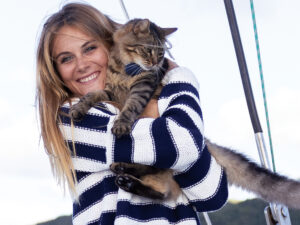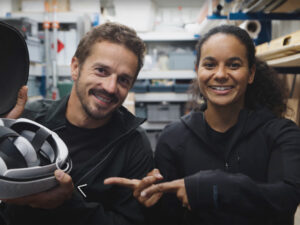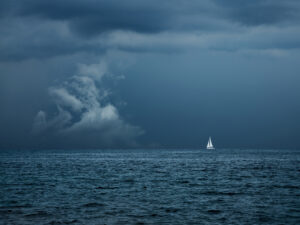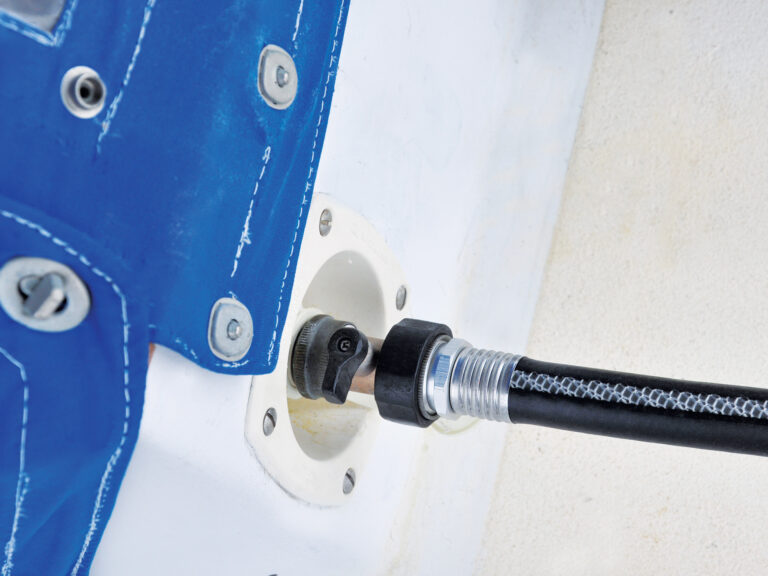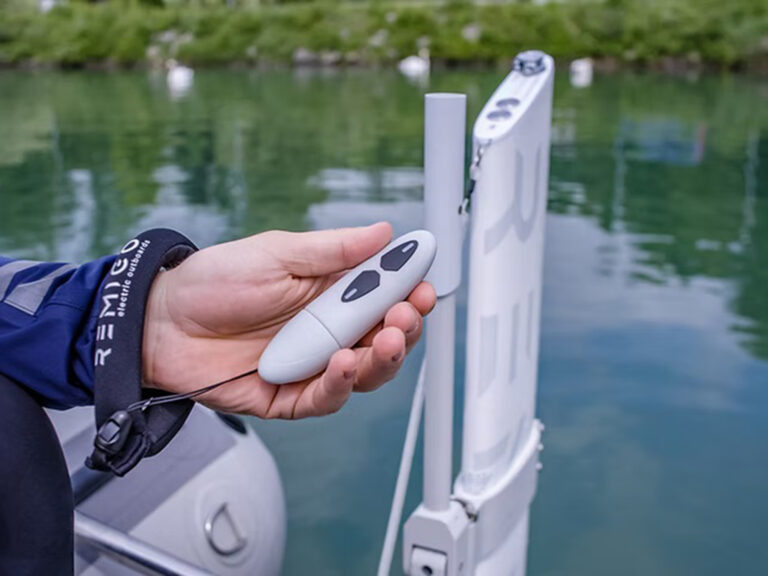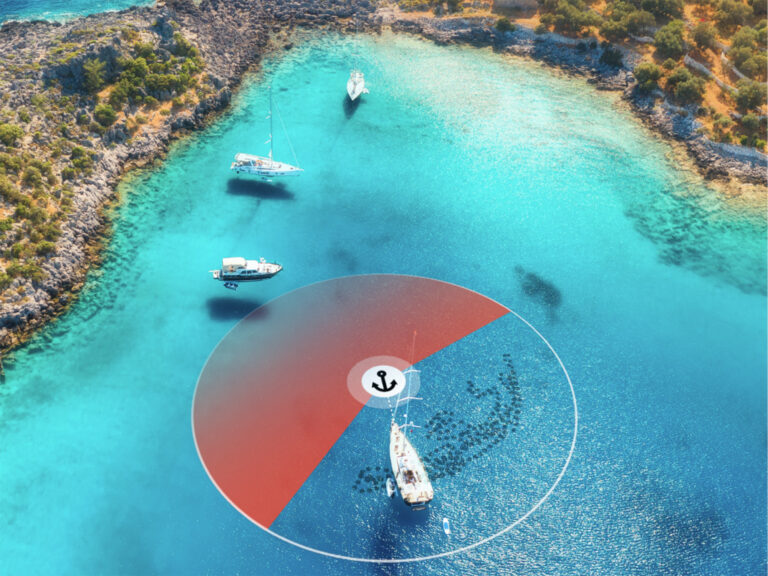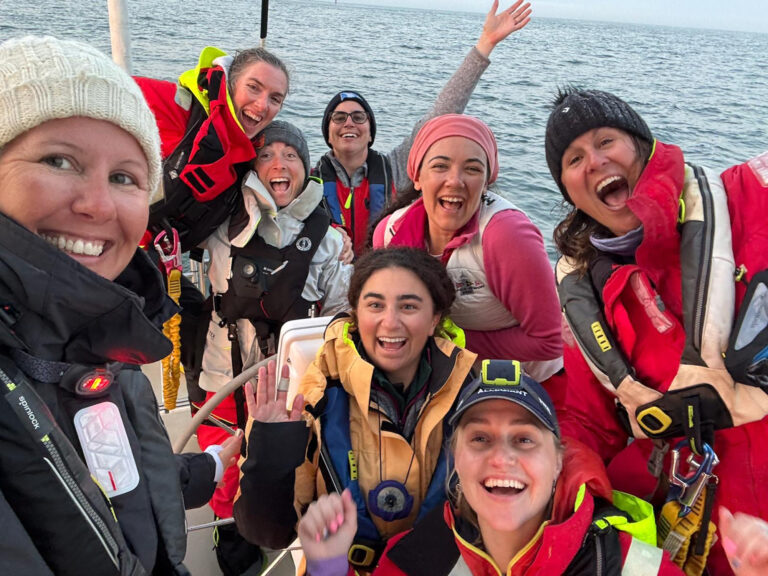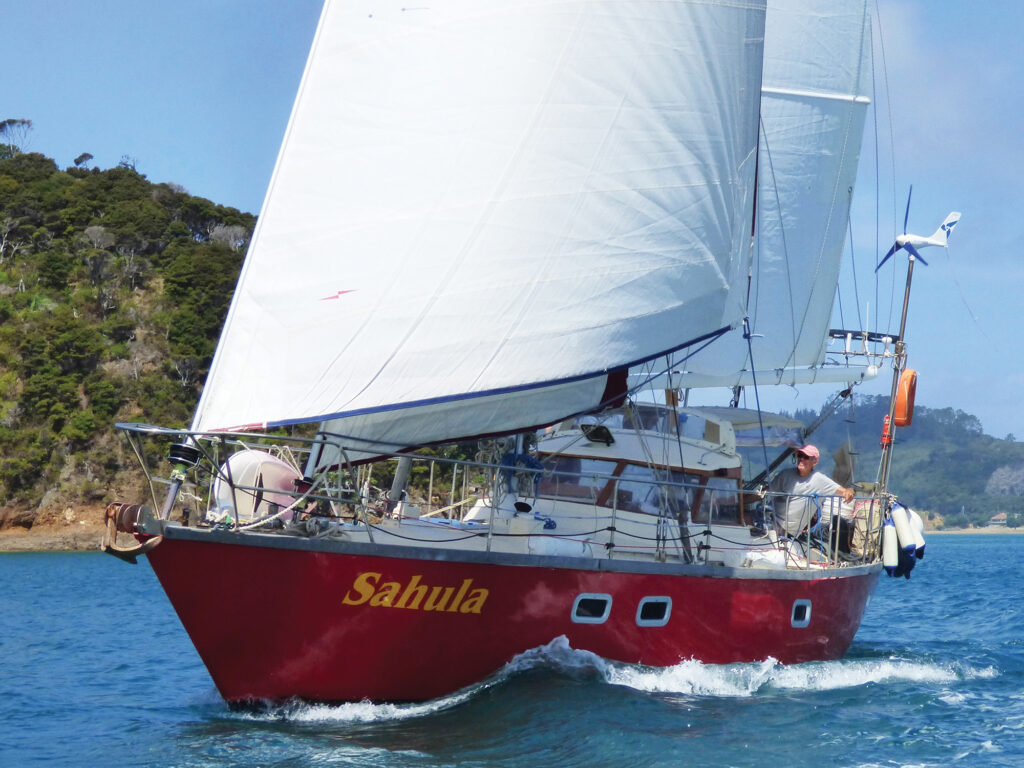
Whatever it is you’re doing down there, forget it!” David shouted. “Be quick. You need to see this!”
Though we’ve voyaged together for less than a year, I now know my Aussie partner David Haigh well enough to realize that this is not an emergency. Still, I quickly turn off the burner under the soup, tighten the clamps holding the pot on the gimbled stove, and put the hot loaf of fresh bread on a nonslip mat atop the counter.
The sight that awaits me is breathtaking. A quarter-mile ahead, a half-dozen huge dolphins dash about in a frenzy, leaping into the air, twisting, churning the sea around them into a white froth. “Did you grab your camera?” David yells as he begins climbing out of the cockpit to get a closer look.
My first thought: What a perfect ending to a wonderful cruise.
I don’t have time for a second thought. A fierce wind knocks our 40-foot Van de Stadt, Sahula, almost flat.
Laying on its beam ends, it still slices forward, held on course by the self-steering vane. Dollops of salt water begin lapping over the cockpit coaming.
“Run her off!” David yells over the roar of wind and the crash of rushing water. He scrambles back into the cockpit and slides across to the leeward sheet winch. I climb past the steering pedestal, grab the wheel, and struggle to fight the leverage of the windvane rudder.
Welcome to Tasmania
Tasmania, situated well into the Roaring Forties, is subject to challenging weather. No matter the season, low-pressure systems march around the bottom of the world unhindered by any land. They intensify when they run into the mountains of this rugged island. Because the lows move slower during the summer season, we could keep a flexible schedule and enjoy almost two months of sailing as we meandered south through the D’Entrecasteaux Channel on the eastern shore of Tasmania. As autumn approached, we’d grabbed a light weather patch to head around the southern tip of Tasmania and reach the splendid isolation of Port Davey on the wild west coast.
My husband, Larry, and I had sailed here several years before, bound westward toward the Indian Ocean. During this second visit on Sahula, I had a sense of déjà vu as David and I made our way along the shoreline where wombat tracks were the only way to get through the dense undergrowth. We took dinghy forays up river gorges. I enjoyed the solitude on board in a perfect keyhole anchorage while David scrambled over jumbles of rocks to climb Mount Rugby, the highest local peak. Little had changed in Port Davey; Larry and I had encountered only one other visiting yacht and three commercial fishermen who shared weather information with us. Now, almost 25 years later, David and I encountered two other yachts in two weeks’ time, and no fishermen.
As the autumn days grew ever shorter, David began to monitor the approaching weather systems using his ham radio. Just when we were feeling sated, the forecast promised a 15- to 20-knot northeasterly, slowly backing all day long. If the report was correct, it meant we’d have a beam reach for each of the three legs of the 55-mile trip around the bottom of and back into the shelter of the east coast.
We were underway at daybreak on a fresh northeaster. Sahula is at its best with winds of 15 knots. The windvane self-steering works wonderfully if it has two reefs in the mainsail and the large yankee set. (That’s what David calls it, and it’s his boat. I call it a high-cut jib.)
When we cleared Port Davey, we found only a hint of the southwesterly swell that is normally a constant on this coastline. Sailing couldn’t have been better. Once we were settled in for the first 17-mile reach toward South West Cape, I decided to cook up a hearty soup and bake some bread.
The wind soon began to back, as forecast. By the time we had to alter course to head due east around the tip of South West Cape, the wind was out of the north. We’d allowed for a comfortable offing. We didn’t want to be too close to shore, where the steep chain of mountains lining Tasmania’s west coast might blanket our wind and leave us becalmed.
We hadn’t considered the alternative. But now, as the wind screamed and Sahula dragged its topsides through the water, David seemed to take forever to reach the leeward side of the cockpit, though in reality it was seconds.
“Grab hold of the sheet!” he yelled as he pulled it out of the self-tailer.
Before I could steady myself enough to reach over and grab the sheet, it pulled loose from the winch. The sail began to flog madly. The sound was almost overwhelming. The boat’s shaking transmitted through my arms as I struggled to steer it off.
The wind continued to scream at gale force. But now, without the pressure of the headsail, I was able to overcome the power of Sahula’s self-steering rudder. The boat slowly bore away and came more onto an even keel, rushing downwind at 7 knots with only the double-reefed mainsail.
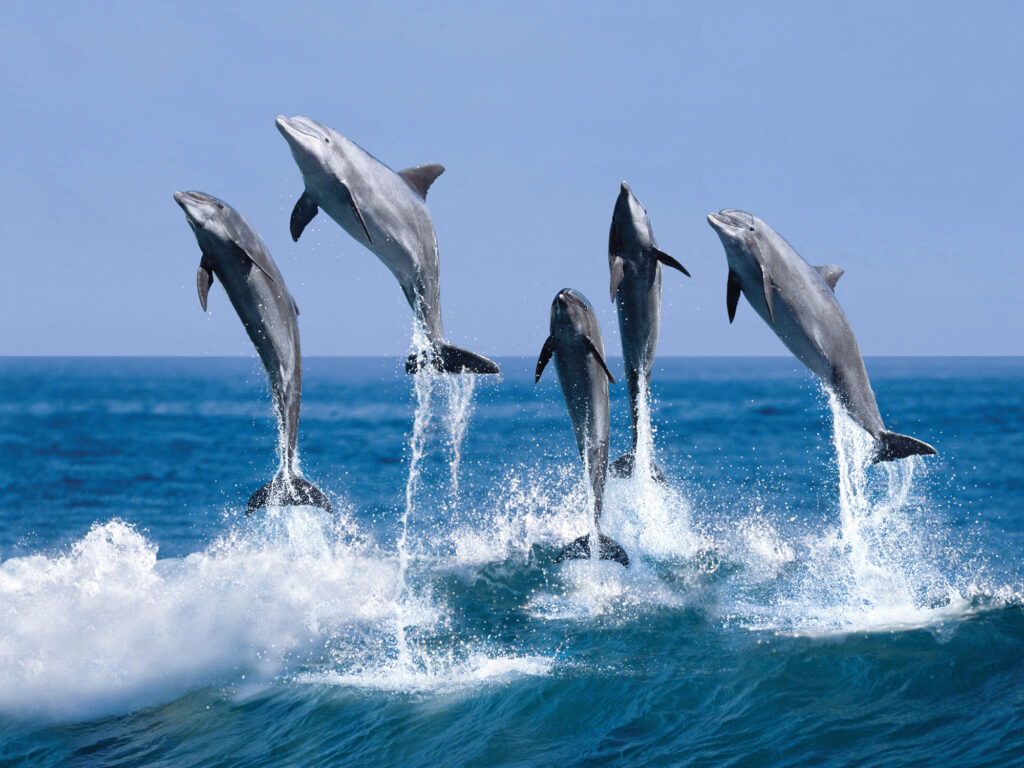
David scrambled to the windward side of the cockpit and grabbed the headsail furling line, got it around the sheet winch, and began cranking. Forgotten were the dolphins, which now leaped and gallivanted just feet away from us. All that filled my mind was the terrible sound of the flailing headsail.
It felt like a horrendously long time until David was able to furl the yankee. Seconds after it furled, the gale-force wind, the noise, the white water and the dolphins left us.
The Aftermath
We sat shaken and immobile. Neither of us moved or said anything for several minutes, even after the wind settled back into a 15-knot northerly.
As David once again unfurled the yankee and got it pulling, I went below to pick up the loaf of bread that had leaped off the counter, and to relight the fire under the soup. Then we began dissecting the mistakes we’d made.
We’d both spent time sailing close to steep mountains, in the fjords of Norway, in Patagonia and in New Zealand’s Fjordland. There, we’d constantly been on watch for the sudden, violent gusts known as williwaws. South West Cape is sheer-sided, just like the mountains of those fjords, yet we never considered the possibility of williwaws here.
When the williwaw hit, I hadn’t thought to let the headsail fly.
I could have. I should have. I was right next to the winch when we got knocked almost flat.
The list kept growing.
Then, as we began to sail onward, we both looked back to where the dolphins still cavorted. Our real mistake became obvious.
In our delight at the dolphins’ antics, we’d missed the information that nature was providing. The churning whitecaps had nothing to do with the playful animals. That white water was the warning of a full-fledged williwaw.
We may have been out in the cockpit looking around, but we definitely were not on watch.
After cruising more than 240,000 miles, US Sailing Hall of Fame inductee Lin Pardey is headed to sea again. Her latest book, Passages: Cape Horn and Beyond, encourages folks to go simple, go small, and go now.

